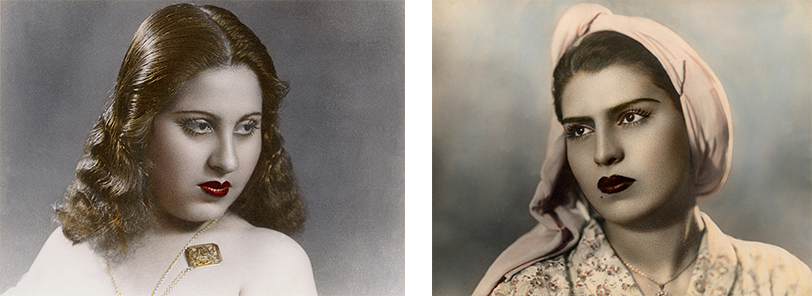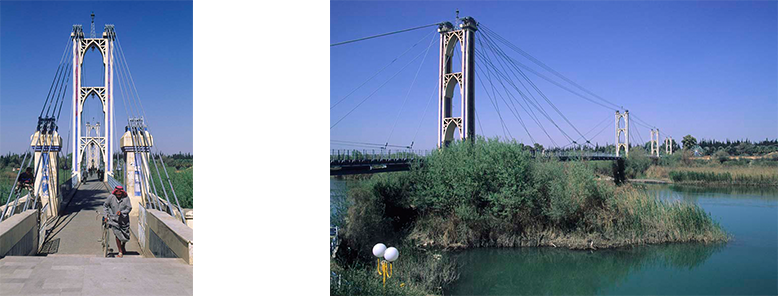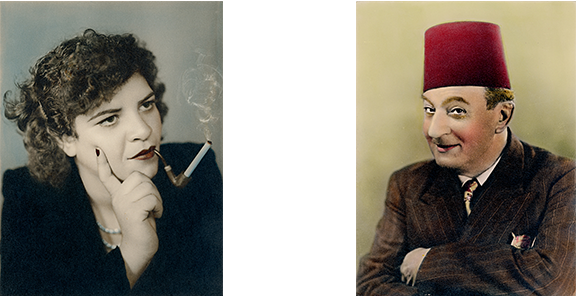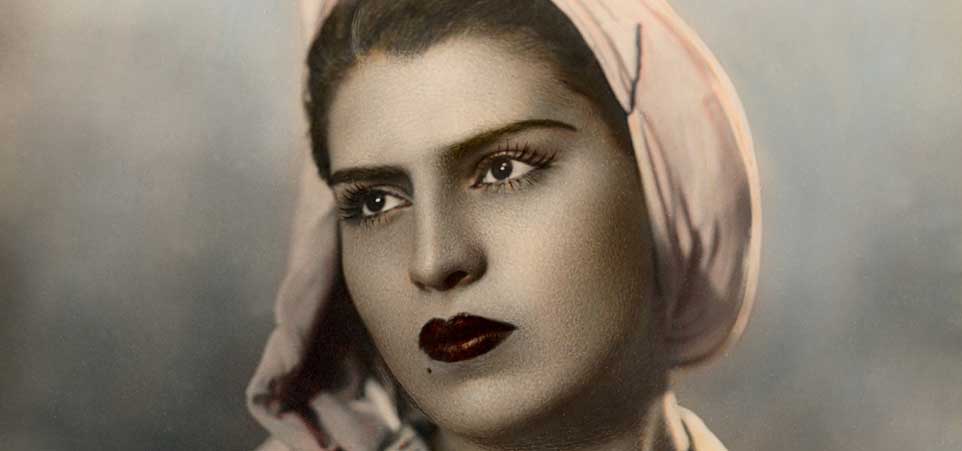by Patrick Godeau
In 2003, while I was living in Syria, I embarked on a tour of the country which took me through Deir ez Zor, a city little known to the outside world until the outbreak of the Syrian Civil War in 2011. In this remote place, I fell upon a nondescript store, which turned out to be a once popular Armenian photographic studio with an impressive archive of portraits dating back to the golden age of photography in the Middle East.
I knew little about Deir ez Zor when I arrived there that April morning. I was aware of the city’s connection with the tragic events of the Armenian Genocide. It was there that the Young Turks established the largest camp to house the multitude of Armenians who had been deported from Turkey in 1915, and were forced to march for long distances under terrible conditions. Once they reached their destination, many died from famine and exhaustion. Very few Armenians stayed long enough to integrate into this urban society, as most were uprooted once again to places further east, towards Ras el-Ain or Mosul, in Iraq.

Portraits of two women. Patrick Godeau Collection, Phot. Studio el Karawan
I also knew that one of the famous landmarks in Deir Ez Zor was the so-called “Bridge of the French,” an iron suspension bridge built by the French in 1927. Unfortunately, this historic structure was destroyed in 2013, when it was hit by artillery fire. After contemplating the bridge from a distance, as I walked along a street parallel to the river, I noticed a somewhat plain store which resembled a photo studio. The storefront showed the establishment’s name, Studio el Karawan, and the walls outside were covered with a few advertisements and commercial stickers. The window barely showcased any items, but it was clear that this place had a connection with photography; there were a few dated prints and old promotional products next to empty faded film boxes.

The metal suspension bridge known as “Bridge of the French.” Phot. Patrick Godeau
The door was wide-open, so I went in. The size of the shop was much greater than could be perceived from the outside, but the feeling of emptiness was overwhelming. It was obvious that the place had known better days. The only light that brightened the shop was the sunlight coming in from outside, making the space look even barer.
A young man, who was approximately 30, stood behind the counter. He looked somewhat puzzled to see me because Western visitors were rare in this city and even rarer in his shop. Nevertheless, he warmly returned my greeting in Arabic. Once the surprise element wore off, he introduced himself as Aram and asked how he could help. I first pretended that I was looking for batteries but, after we warmed up to each other, I revealed that I was a professional photographer. I also shared that I knew a Damascus-based Armenian photographer, whose last name was Chahelian but went by “Garbis.” He had documented the most important events of the second half of the twentieth century in Syria, but had been reduced to taking passport pictures in his dusty shop. To his misfortune, no family member had expressed interest in his business which meant that, one day, his lifework would end up dispersed and owned by strangers.
It was Aram’s grandfather who established Studio el Karawan. Like many Syrians of Armenian origin, his grandfather had chosen photography as a trade and then passed on the business to the next generations. However, although the studio was still functional, it was far from the prestigious establishment that it once was. Aram admitted that he too had to adapt to modern times, and that he had no option but to specialize in mugshots and photocopying documents. “The days of large beautiful portraits are gone, except for weddings,” he said. “In the old days, we catered to people who wanted their portrait recorded in history. It gave us an extraordinary opportunity to meet members of the community. The larger the circle, the more clients we had,” Aram added.

Portraits of woman smoking and man wearing a Fez. Patrick Godeau Collection, Phot. Studio el Karawan
Out of curiosity, I asked Aram if he had a few prints that he or his predecessors had taken. After he disappeared for a few moments, he came back carrying a large load which he placed on the counter. When I laid my eyes on the portraits, I realized how precious they were. I offered to buy one or two prints as samples for a cultural project in which I was involved. Aram offered to let me borrow a large collection to take to the project’s sponsors in Damascus, and then return it to him. I wasn’t comfortable with this option, as I did not know when I would make it back to Deir ez Zor. Therefore, I chose to buy a limited collection on the spot, hoping that it would be a good representation of studio el Karawan’s work. Unfortunately, that cultural project never saw the light, as I had to leave Syria with my family shortly after this trip.
Now, when I look at these portraits, I think of all the anonymous photographers who worked arduously for decades in the most remote areas of the Middle-East to document the lives that unfolded around them. I think of the tens of thousands of images that they created to capture brief moments in the lives of people who are no longer in this world, or have moved on to build futures elsewhere.
Above all, I think of Aram and hope that the war has spared him as well as the iconographic treasures that he inherited. I wish that someday, this work will be rediscovered and given the exposure that it deserves. For now, I hope you enjoy and admire the images in this collection.
Translated from French by Zina Hemady




Thank you for sharing this fascinating collection and some of the history associated with the studio. It would be great to uncover the family name (and early history) associated with this studio. It is yet one more example of the many great Armenian studios that existed in the region. Thanks again!
Beautiful testimony and pictures!